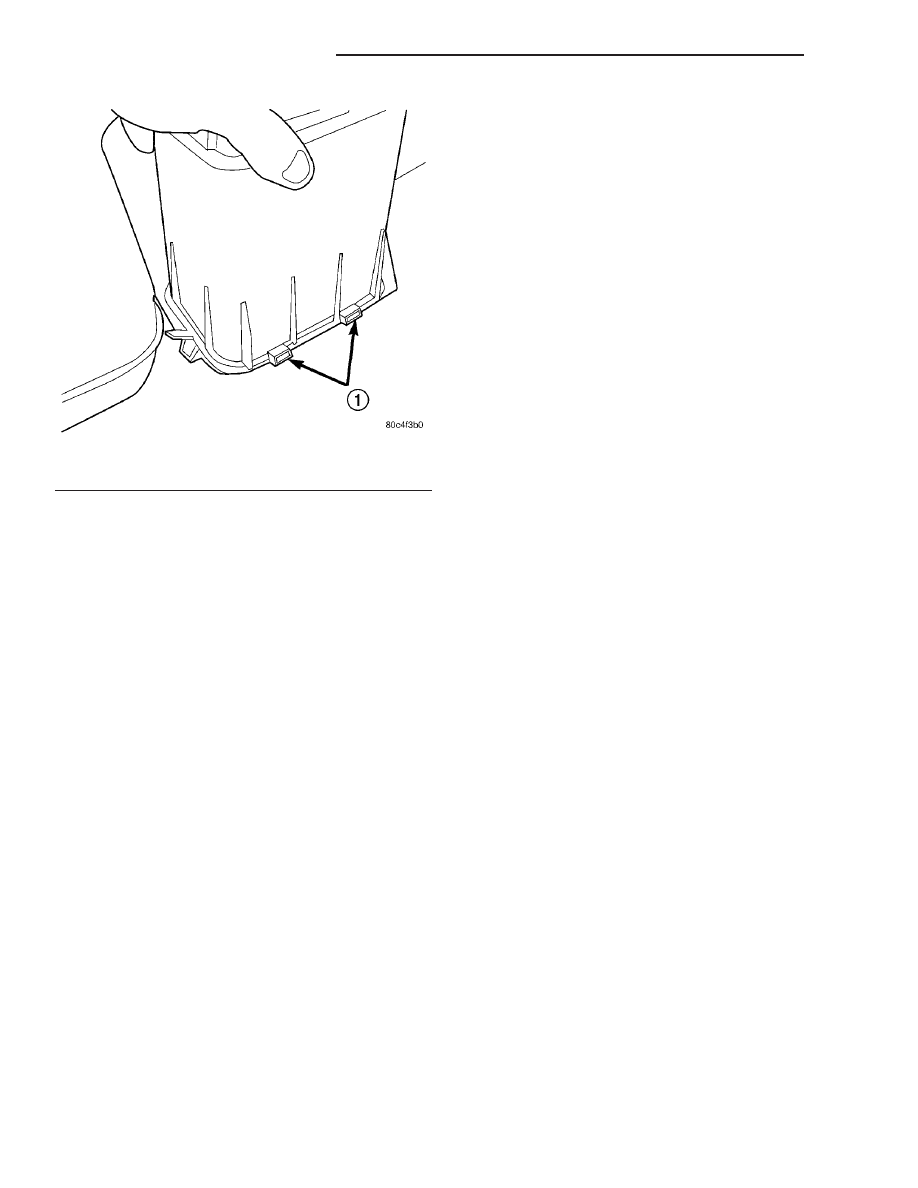Chrysler PT Cruiser. Manual - part 990

INSTALLATION
(1) Install EVAP canister over bracket tabs (Fig.
19).
(2) Push canister back and into the bracket until
the spring clips snap over the edge of the canister
(Fig. 18).
(3) Install the push pin through the EVAP canister
and the bracket and into the fuel tank (Fig. 17).
(4) Install hoses and lines.
(5) Install the fuel tank and EVAP system, refer to
the Fuel Tank removal/installation section in the
Fuel Delivery section.
(6) Lower vehicle.
(7) Install the negative battery cable.
(8) Install the air cleaner lid, connect the inlet air
temperature sensor and makeup air hose.
(9) Fill fuel tank. Use the DRBIII
t scan tool to
pressurize the fuel system. Check for leaks.
Fig. 19 Bracket Tabs
1 - TABS
25 - 20
EVAPORATIVE EMISSIONS
PT
VAPOR CANISTER (Continued)